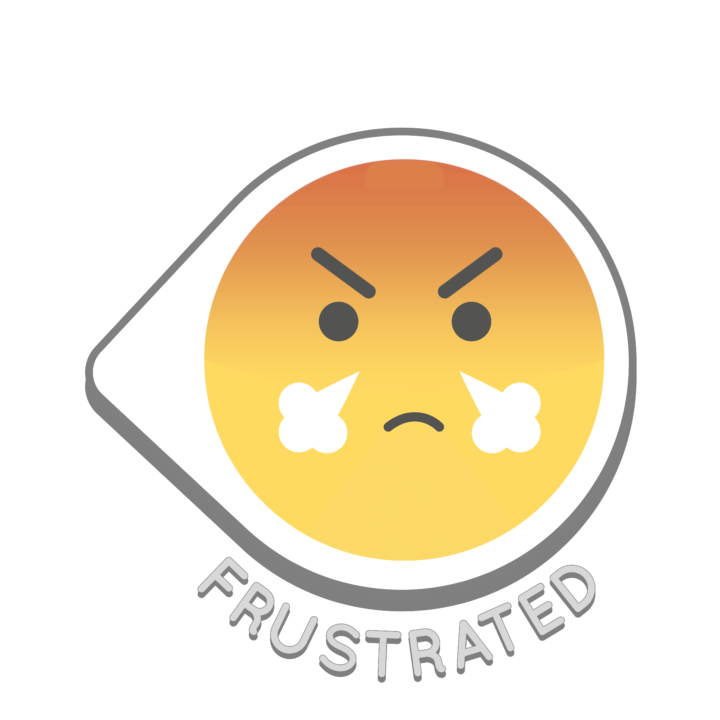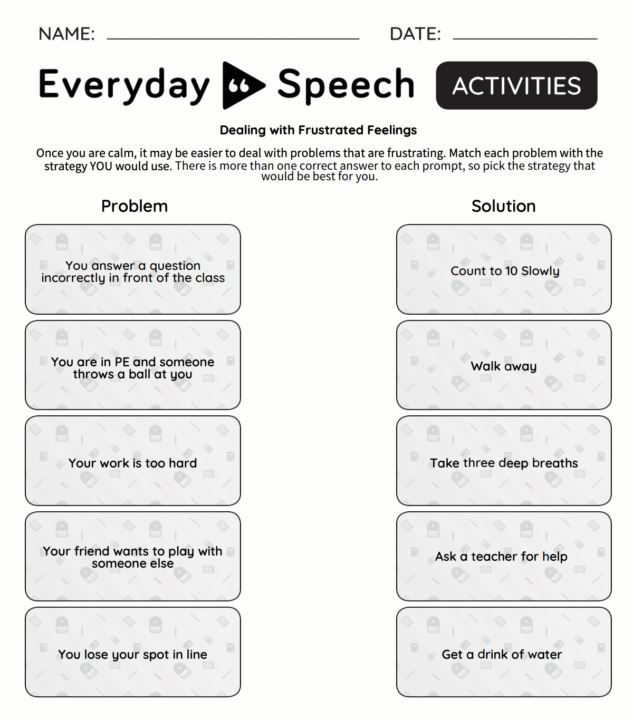
Being a Speech-Language Pathologist, we are uniquely positioned to teach our students invaluable life skills, such as emotional management and resilience. With the increasingly fast-paced and high-pressure environment in which children grow up, understanding and effectively dealing with emotions like frustration is paramount.
Today, we will explore a simple and effective lesson plan to help elementary students manage frustration. Download this printable elementary feeling frustrated activity, an essential tool in every SLP’s toolkit!
Understanding Frustration
Before we delve into the lesson plan, it’s important to understand what we mean by “feeling frustrated”. Frustration often arises when a child feels blocked from achieving a goal. It’s a natural, healthy emotion, but it can become problematic if not handled appropriately.
Our goal is not to eliminate frustration – that would be both impractical and unhealthy. Instead, our objective is to help students understand their frustration, manage it effectively, and use it as a catalyst for growth.
The Lesson Plan: An Overview
Our “Elementary feeling frustrated activity” lesson plan is divided into three stages.
- Identifying Frustration: Children need to recognize when they are feeling frustrated. This recognition is the first step towards effective management.
- Exploring Frustration: Here, we delve deeper into the emotion, helping children understand why they are feeling frustrated.
- Managing Frustration: Finally, we equip the students with strategies to deal with their frustration effectively and constructively.
- Use our printable Dealing with Frustrated Feelings worksheet to help students practice all three of these stages!
Let’s delve into each of these stages in more detail.
Identifying Frustration
The first part of our lesson plan aims at helping students recognize when they are feeling frustrated. You can accomplish this by introducing them to the physical and mental signs of frustration. For instance, they might feel their heart racing, their face flushing, or they might start having negative thoughts.
Use a simple, no-prep activity like “Emotion Charades” to help children identify these signs. In this activity, students take turns acting out different emotions while the rest of the class guesses. You can emphasize frustration, highlighting the different signs.
Exploring Frustration
Next, we move to the exploration stage. Here, our goal is to help students understand the source of their frustration. This understanding is vital for managing their emotions effectively.
One practical and engaging activity is “The Frustration Web”. In this activity, the child starts with a central bubble labeled ‘frustration’. Then they add connecting bubbles with examples of things that make them frustrated. The idea is to understand that frustration is often a response to specific events or situations.
Managing Frustration
The final part of our lesson plan focuses on strategies for managing frustration. One effective strategy is teaching children deep-breathing exercises, which can help calm their minds and bodies.
Use the “Balloon Breathing” activity for this. In this activity, students pretend to inflate a balloon by taking a deep breath in, hold it for a few seconds, and then slowly exhale as if they were deflating a balloon.

Conclusion
The ability to manage frustration is a crucial skill that can significantly improve a child’s quality of life. As SLPs, we have the unique opportunity to impart these skills to our students, making a positive and lasting impact on their lives.
Remember, the ‘Elementary feeling frustrated activity’ is flexible. Feel free to adapt and modify it to better suit your students’ individual needs and personalities.
Sample Video
Students learn best from watching real students their own age model skills. Try out this sample video-modeling lesson below. We offer our entire Social-Emotional Learning platform free for 30 days here!
Related Blog Posts:
Social Skill: Emotional Recognition
Free Identifying Feelings Lesson Plan





